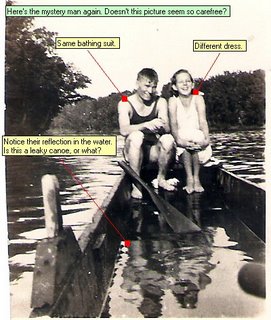Ivy, Daffodils, and Wild Onions in January (Courtesy of a 164-Year-Old Cemetery)
When I was a little girl growing up in Cottage Grove, Minnesota, we frequently drove past a cemetery set against the slope of a hill off of Highway 61. My older brother and I would always hold our breath. Now I can’t remember why, what the superstition was.
In fact, today I walked all over a cemetery without holding my breath once! Neither did my older son, who is seven-and-a-half. He and his brother have never caught on to that superstition. But back to the story ...
We were there to help tear out and bag some ivy that had gotten out of hand in a neglected historic cemetery in DeKalb County, Georgia. (For more information on this hard-working organization and the stunning progress they’ve made over the past several years, visit the Historic Sylvester Cemetery Foundation on the Web.)
I had decided to volunteer today, on Martin Luther King’s Day, because for several years the Hands On Atlanta organization has orchestrated a massive volunteering day around Atlanta for MLK Day. On the spur of the moment, I volunteered myself and my son, and the Sylvester Cemetery project caught my eye because I had blogged on cemetery preservation before. It was time to put my money where my mouth is. Or is that put my muscle where my mouth is? (I also had the ulterior motive of setting an example of community service – the non-court-ordered kind, of course – for my son.)
So, for two-and-a-half hours, I pulled ivy. (My son did some pulling interspersed with heavy snacking from the bag of food I’d brought and a bit of exploring.) The 164-year-old cemetery was in great shape; more evidence of the Sylvester Cemetery Foundation’s hard work. I was amused to find daffodils in full bloom – in mid-January! – poking up between the graves. I also dug out handfuls of wild onions from under the layers of ivy. Although I hadn’t known what to expect when I volunteered for this project, just the sight of the daffodils alone was worth the trip. I only wish I had brought my camera.
Oh … my son found two snails (slugs?) and a quarter that looked 100 years old – but after cleaning proved to be only six years old. When I saw what exposure to the elements had done to that quarter, I was amazed the cemetery stones were still standing. Actually, many of them weren’t, and the Sylvester Cemetery Foundation is working on that, too. They have pictures of some of the gravestones they’ve repaired.


